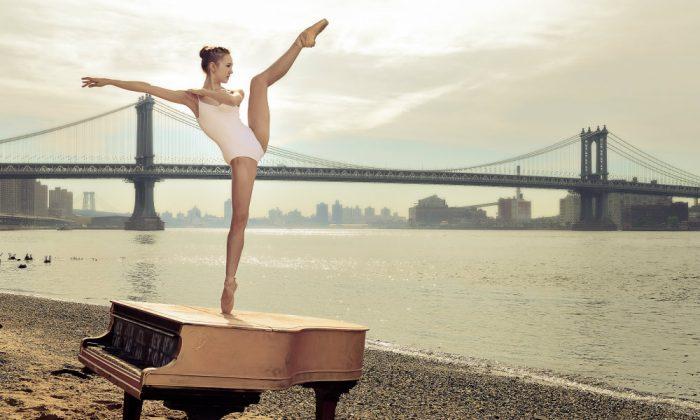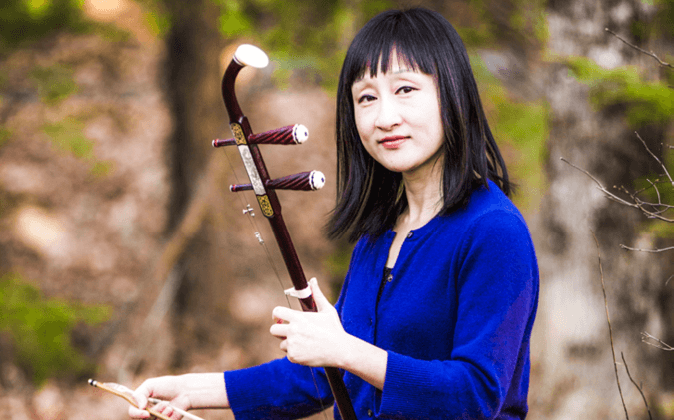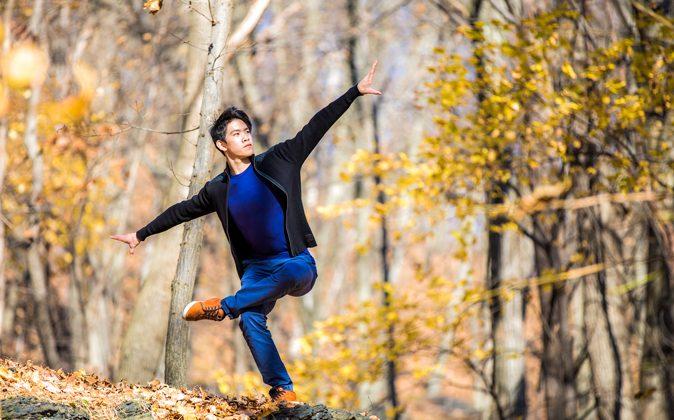NEW YORK—Underneath a grayish purple sky, ballerina Rachel Richardson, of the American Ballet Theater Studio Company, posed on pointe; her left leg lifted into a vertical split as her hands caressed an abandoned piano washed ashore on the beach. It was as if she were consoling its forlorn existence.
This image was captured by 41-year-old Luis Pons. Albeit, he is a relatively new photographer who picked up the camera at a late age, he gained the trust of many of New York City’s most pre-eminent ballet dancers within six months.
Pons’s trademark is exquisite photos of ballerinas dancing in front of urban backdrops such as graffiti, the subway, and a little red lighthouse under the George Washington Bridge where he once sought refuge as a child.
But he has never danced himself. And the reason why he began photographing ballet dancers in the first place is a painful story.
The Descent
Pons, son of Dominican immigrants, grew up amid the cocaine epidemic of the 1980s in Washington Heights.
His father was a freight elevator operator in the Garment District. His mother worked in a bridal crown factory for minimum wage. She designed some of the crowns that were featured in bridal magazines, although the company was always attributed as the designer.
Pons married his high school sweetheart and they had two beautiful children. His woeful days withered away with his childhood.
Pons has made a living as an IT specialist for nearly his entire adult life. Security, stability, and the comfort of a reliable routine. Those were the things he came to value dearly in his life. He never dreamed of becoming a photographer.
Then, in the winter of 2010, for a reason still unbeknown to him, Pons plummeted into depression. Reality as he knew it began to unravel.
It began with a simple illness, a flu perhaps, which kept him out of work for three weeks. After he physically healed from that bug, for the next six months he continued to feel emotionally drained.
There was no particular person, event, or loss in his life that he could point to as the reason for his breakdown. That was why it was scary.
“It was like walking chest deep in water,” he said. He recalled sensing a veil of darkness descend upon him at ordinary places, like a Barnes and Nobles, or at work, and it would entrap him in fear.
It was a struggle to keep his job. He got out of bed each morning with the sole goal of making it through the day so that he could go back to sleep.
It was a despair he did not understand and therefore could not control. He kept attributing it to a physical ailment. But after spending thousands of dollars on doctors, with no satisfying diagnosis, Pons accepted the fact that he was depressed.
“It’s part of that Latino macho to be able to fix things, to understand why,” he said. “It’s a little disconcerting to still not know why it happened.”
Empty Churches, Flamenco, and Ballet
Whether it was by chance or a stroke of providence, Pons bought himself a digital SLR camera for Christmas.
He began visiting churches in the middle of the day to photograph people who looked detached.
“I looked for what I felt in someone else, to capture these candid moments of pain and solitude,” he said.
The street photography section of his website, which Pons calls his “depression era” photography, displays pictures such as a lone, hunched man, struggling to maintain his consciousness or an unfulfilled truck driver staring out his window.
Although the moments that he captured were all sad and lonesome, he felt a sense of euphoria when he was able to capture the right moment, the exact moment that he was looking for. It gave him a sense of control.
Pons grew “addicted” to taking photographs and eased up on his medication. He began to photograph flamenco dancers, for they were vibrant and powerful—characteristics that no longer existed in him.
Flamenco led to ballet.
Pons never learned ballet. But he was inspired by how powerful a ballerina could look in a serene environment.
What stands out about his photography are not the dynamic lines and angles that integrate with the dancers’ bodies, but the psyche that the dancers choose to reveal to his lens.
“I take the photo with my heart,” he said. “But I also have to capture the dancer’s heart.”
“A ballet dancer has to look in the mirror all day long. Their hearts are filled with both insecurities and triumph,” he said. “You not only capture moments of vulnerability, but also moments of perfection.”
It is a mutually benefiting experience for both Pons and his subjects.
“I was, like, wait ... Is that me?” said Rachelle Di Stasio, 17, the first ballerina Pons ever photographed. “I’ve had professional ballet shots before,” she said. “But Luis’s photo was a complete one where the movement and the background became one.”
It was a photo of her in front of a NYPD truck, and it went viral.
“All these new opportunities came with this picture,” Di Stasio said. She went on to model for Vogue.
She was also recently promoted to the ABT Studio Company as a contract dancer.
Pons went on to photograph ballet elites such as Lauren Lovette, a New York City Ballet soloist who was featured in the “First Position” documentary.
Family
It took some time before Pons’s family could embrace his new past time. That was the most difficult part about becoming a ballet photographer.
“To them, it wasn’t a confirmation that I was better,” he said.
He still seemed to exhibit strange behavior—getting up at 5:30 on a Saturday morning to photograph a ballerina on a Brooklyn beach.
“Sometimes there’s no answer to the whys in our lives,” he said. “There is a great deal of suffering in life, but it’s about letting go of your attachments. How you deal with pain affects whether you live a positive life or a life that hurts those around you.”
The ballet dancers’ youth and physical strength will inevitably fade, but there is something perennially beautiful about them: their driven spirits. That is what Pons labors to capture each time; that is where he found the strength to finally break away from his despair.
This Is New York is a weekly feature that delves into the life of an inspiring individual in New York City. Read a new feature every Saturday online, and every Friday in print. See all our TINYs here.






Friends Read Free